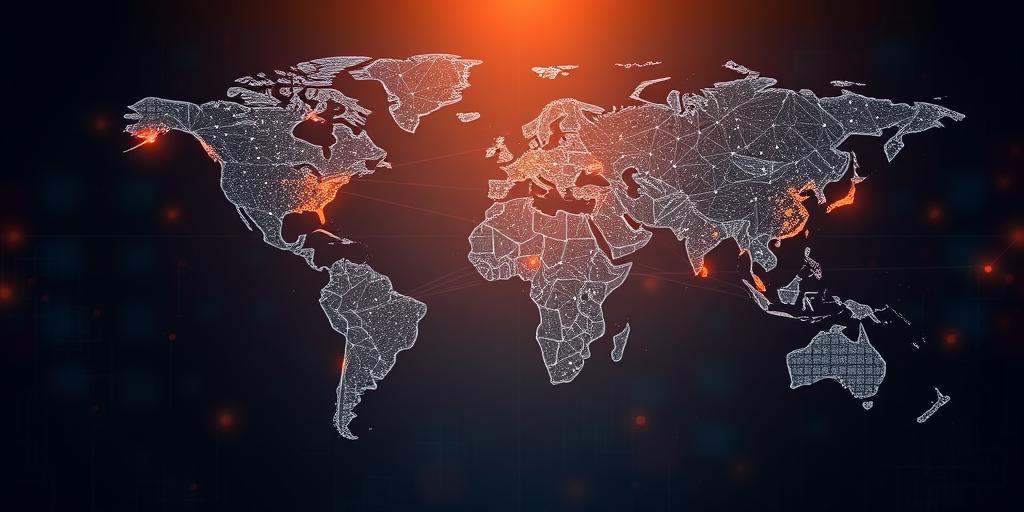Supply Chain Security in Conflict Zones: A Comprehensive Guide
Conflict zones present unparalleled challenges to supply chain security. These regions are characterized by instability, violence, and a breakdown of the rule of law, creating an environment ripe for disruptions, theft, and other illicit activities. Securing supply chains in such areas requires a multifaceted approach that incorporates risk assessment, due diligence, collaboration, and technological solutions.
Understanding the Risks
Before implementing security measures, it's crucial to understand the specific risks associated with operating in conflict zones. These risks can include:
- Theft and Pilferage: Goods in transit or storage may be targeted by opportunistic thieves or organized criminal groups.
- Extortion and Bribery: Supply chain actors may be forced to pay protection money or bribes to local actors to ensure the safe passage of goods.
- Infrastructure Damage: Conflict can damage or destroy critical infrastructure, such as roads, bridges, and ports, disrupting supply chains.
- Political Instability: Changes in government or political upheaval can lead to sudden changes in regulations or trade policies, impacting supply chain operations.
- Humanitarian Crisis: Conflict often leads to humanitarian crises, creating additional challenges for supply chain management, such as the need to prioritize the delivery of essential goods and services to affected populations.
Implementing Security Measures
To mitigate these risks, organizations operating in conflict zones should implement a range of security measures, including:
- Risk Assessment: Conduct thorough risk assessments to identify potential vulnerabilities in the supply chain. This should include mapping the supply chain, identifying critical nodes, and assessing the likelihood and impact of various threats.
- Due Diligence: Perform due diligence on all supply chain partners, including suppliers, distributors, and transportation providers. This should include verifying their legitimacy, assessing their security practices, and evaluating their compliance with relevant laws and regulations.
- Physical Security: Implement physical security measures to protect goods in transit and storage. This can include using secure transportation, employing armed guards, and investing in surveillance technology.
- Information Security: Protect sensitive supply chain information from cyberattacks and other forms of data breaches. This can include implementing cybersecurity protocols, training employees on data security best practices, and using secure communication channels.
- Collaboration: Collaborate with other organizations, including government agencies, NGOs, and industry groups, to share information and coordinate security efforts. This can help to improve situational awareness and enhance the effectiveness of security measures.
- Technology Solutions: Utilize technology solutions to improve supply chain visibility and security. This can include using GPS tracking, RFID tags, and blockchain technology to monitor the movement of goods and verify their authenticity.
Case Studies
Several organizations have successfully implemented security measures to protect their supply chains in conflict zones. For example, the World Food Programme (WFP) uses GPS tracking to monitor the movement of food aid in conflict-affected areas, ensuring that it reaches those who need it most. Similarly, some companies use blockchain technology to track the provenance of minerals from conflict zones, helping to prevent the trade in conflict minerals.
The Role of Technology
Technology plays a crucial role in enhancing supply chain security in conflict zones. Some key technologies include:
- GPS Tracking: Provides real-time visibility into the location of goods in transit.
- RFID Tags: Enable the tracking of individual items throughout the supply chain.
- Blockchain Technology: Provides a secure and transparent platform for tracking the provenance of goods.
- Data Analytics: Helps to identify patterns and anomalies that may indicate security threats.
- Cybersecurity Solutions: Protects sensitive supply chain information from cyberattacks.
Best Practices for Supply Chain Security in High-Risk Areas
Here are some best practices to consider:
- Develop a comprehensive security plan: A detailed plan is crucial for addressing potential threats.
- Ensure compliance: Adhere to international laws and regulations related to supply chain security.
- Invest in employee training: Well-trained employees are the first line of defense against security breaches.
Conclusion
Securing supply chains in conflict zones is a complex and challenging undertaking. However, by understanding the risks, implementing appropriate security measures, and leveraging technology, organizations can protect their operations and ensure the delivery of essential goods and services to those who need them most. The convergence of proactive strategies, technological innovation, and collaborative efforts is essential for navigating the unique challenges presented by conflict zones. Businesses that prioritize these elements can not only safeguard their assets but also contribute to stability and resilience in volatile regions.









